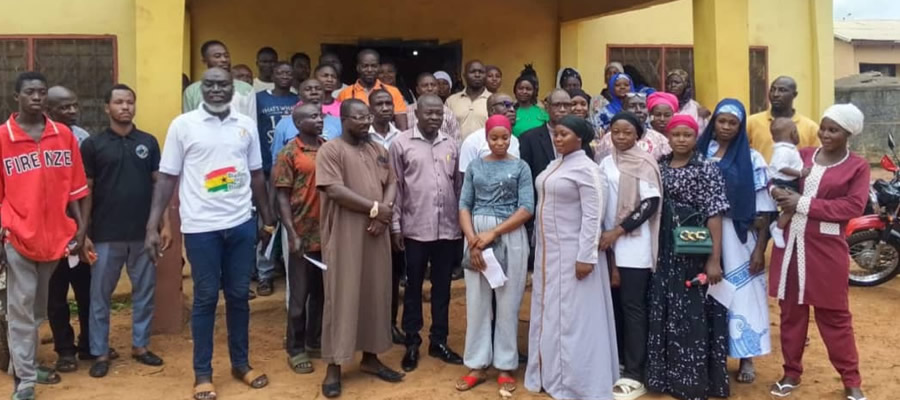

Location and size
The East Mamprusi Municipal is located in the north-eastern part of the Northern Region. To the north, it shares boundaries with Talensi and Nabdam Districts, Bawku West and Garu-Tempane Districts, all in the Upper East Region and to the east is the Bunkpurugu-Yunyoo District. It is bordered in the west by the West Mamprusi District and to the south by the Gusheigu and Karaga Districts. It covers a land mass of 1,706.8 square kilometers, representing about 2.2 percent of the total land mass of the region.
Climate
The District lies in the tropical continental western margin and characterized by a single rainfall pattern brought in by the rain bearing tropical maritime air mass (MT). This occurs between April and October every year. This is followed by the tropical continental air mass (CT) which brings about the dry season (Harmattan) and occurs from late November to March. The mean annual rainfall is between 1000mm to 1500mm with the peak occurring from July to September. The District experiences a prolonged dry season with the peak occurring between March and April.
Temperature is fairly high with the annual mean temperature ranging from 27.4oC to 35oC depending on the season. The highest temperature is recorded in the dry season while the lowest is experienced during the Harmattan season.
Vegetation
The District lies within the interior woodland savannah belt and has Common grass vegetation with trees like dawadawa, baobab, sheanut, etc. Grasses grow in tussocks and can reach a height of 3 metres or more. There is marked change in the vegetation depending on the two prevailing climatic conditions. During the rainy season, animals graze on the grasses which serve as feed for them and hence lessen the burden of animal owners in finding feed for them. Shea tree is of great economic value for the women who pick the nuts and process it into shea butter.
Relief and drainage
The land is generally slightly undulating with the Gambaga escarpment marking the Northern limits of the Voltain Sandstone basin. Apart from the mountainous areas bordering the escarpment, there is also little runoff when it rains. There are different types of rock formation given the different relief features, which range from flat bottom valleys to steep-sided highlands. The upper half of the District is underlined by the middle Voltain formation consisting of shale, mudstone, iron pans and sandstone.
The District has good water drainage basin. The White Volta, which enters the region in the northeast is joined by the Red Volta near Gambaga, The Nawong and Moba rivers are major perennial rivers in the District.
Soil and their suitability for agriculture
There are two major soil types in the District. These are the Savannah Ochrosols and Groundwater Laterites. The Savannah Ochrosols which covers almost the entire District, is moderately drained and the upland soils developed mainly on Voltain sandstone. The texture of the surface soil is sandy to sandy loam with fairly good water retention. The Groundwater Laterite covers a smaller portion of the District and is mainly found in the southern part of the District.
These are concretionary soils developed mainly from Voltain shale, mudstone and argillaceous sandstone materials. The texture of the soil is sandy loam which is suitable for the cultivation of annual food crops such as maize, millet, sorghum, watermelon etc and tree crops with long gestation period such as sheanut, dawadawa, cashew etc which are of economic importance.
Date Created : 11/18/2017 4:14:03 AM









 facebook
facebook
 twitter
twitter
 Youtube
Youtube
 +233 593 831 280
+233 593 831 280 0800 430 430
0800 430 430 GPS: GE-231-4383
GPS: GE-231-4383 info@ghanadistricts.com
info@ghanadistricts.com Box GP1044, Accra, Ghana
Box GP1044, Accra, Ghana